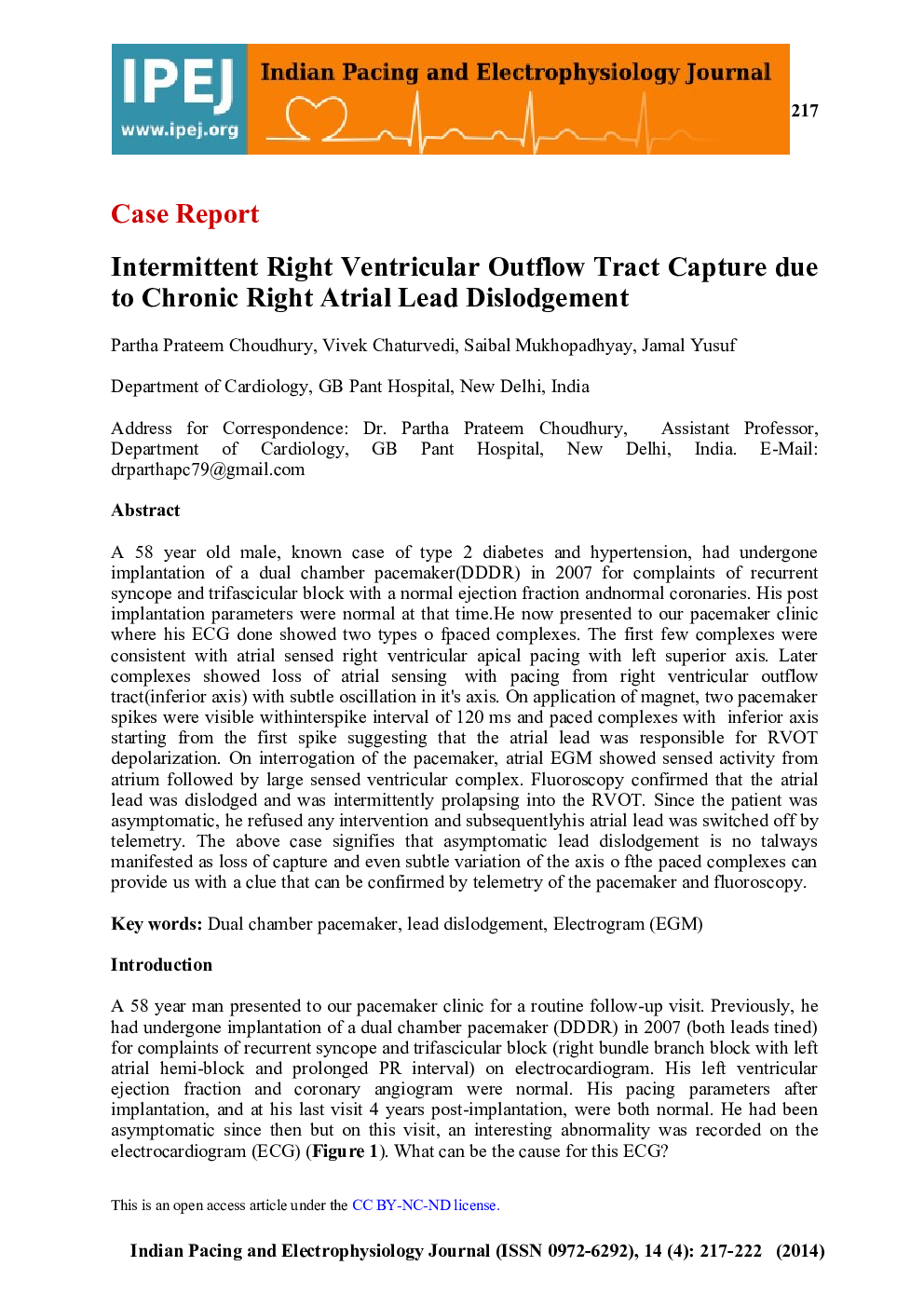| Article ID | Journal | Published Year | Pages | File Type |
|---|---|---|---|---|
| 2928450 | Indian Pacing and Electrophysiology Journal | 2014 | 6 Pages |
A 58 year old male, known case of type 2 diabetes and hypertension, had undergone implantation of a dual chamber pacemaker(DDDR) in 2007 for complaints of recurrent syncope and trifascicular block with a normal ejection fraction andnormal coronaries. His post implantation parameters were normal at that time. He now presented to our pacemaker clinic where his ECG done showed two types of paced complexes. The first few complexes were consistent with atrial sensed right ventricular apical pacing with left superior axis. Later complexes showed loss of atrial sensing with pacing from right ventricular outflow tract(inferior axis) with subtle oscillation in it’s axis. On application of magnet, two pacemaker spikes were visible withinterspike interval of 120 ms and paced complexes with inferior axis starting from the first spike suggesting that the atrial lead was responsible for RVOT depolarization. On interrogation of the pacemaker, atrial EGM showed sensed activity from atrium followed by large sensed ventricular complex. Fluoroscopy confirmed that the atrial lead was dislodged and was intermittently prolapsing into the RVOT. Since the patient was asymptomatic, he refused any intervention and subsequentlyhis atrial lead was switched off by telemetry. The above case signifies that asymptomatic lead dislodgement is no talways manifested as loss of capture and even subtle variation of the axis o fthe paced complexes can provide us with a clue that can be confirmed by telemetry of the pacemaker and fluoroscopy.
